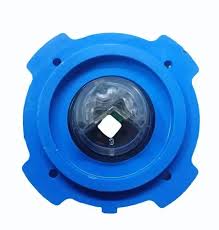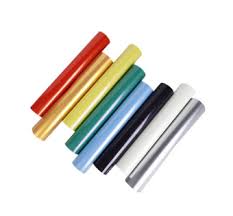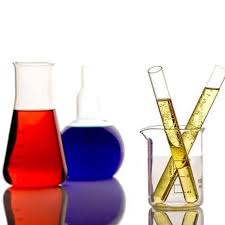MARKET OVERVIEW:
Global Textile Chemical Formulators and Resellers market is estimated to reach $21804.7 Million by 2031; growing at a CAGR of 4.5% from 2024 to 2031.
This Global Textile Chemical Formulators and Resellers market is essential for the textile industry, providing chemicals needed for production, enhancing material performance, and meeting changing consumer needs. The company focuses on formulating, manufacturing, and distributing a variety of chemical solutions crucial for textile manufacturing and finishing. These chemicals include dyes, surfactants, softeners, and advanced finishing agents, each designed to improve durability, appearance, and functionality of textiles. While formulators create specialized compounds, resellers distribute them globally, ensuring manufacturers receive the right solutions for their needs.
The increased diversity in textile applications drives growth in this market, as there is a high demand for chemicals that enhance strength, aesthetics, and longevity. Industries like fashion, healthcare, automotive, and home furnishings depend heavily on these chemicals for textile treatment, fostering innovation in the market. With growing environmental concerns, the formulation of eco-friendly chemicals is gaining importance, leading formulators to seek sustainable solutions that remain effective. This approach is expected to shape the Global Textile Chemical Formulators and Resellers market for years to come.
In this market, chemical formulators and resellers act as both partners and leaders. Formulators invest in research to develop chemical solutions tailored to the textile industry's varied needs, focusing on properties like moisture, fire, stain, and microbial resistance. Their formulations undergo meticulous testing to ensure that manufacturers achieve high quality and product uniqueness. Resellers bridge the gap between producers and manufacturers, making it possible for global textile manufacturers to source necessary chemicals from diverse origins. Distributor networks are vital for textile supply chains, highlighting the importance of this business sector.
As government regulations on environmental issues become stricter, market players will adapt to meet oversight demands. Concerns about human health and the environment are leading regulatory bodies to enforce tougher standards for textile chemical use, which will compel formulators to innovate responsibly. Resellers will realign their offerings to ensure compliance with these regulations, leading to advanced, less toxic formulations that maintain high performance while promoting sustainability.
Digitalization will also shape the market, with formulators and resellers adopting technologies to streamline supply chains, enhance product traceability, and improve customer engagement. Digital platforms will simplify data management, making it easier for stakeholders to predict demand, manage inventory, and ensure regulatory compliance. This transparency and efficiency will prepare the Global Textile Chemical Formulators and Resellers market to meet evolving demands.
In summary, the future of this market will continue to be influenced by innovation, regulatory changes, and a focus on sustainability. It will remain vital in fulfilling various industry and consumer needs through specialized textile chemicals, positioning itself as a key element in the future of the textile industry.

GROWTH FACTORS
The Global Textile Chemical Formulators and Resellers market is poised for significant growth due to factors such as increasing demand for textile chemicals from developing and developed economies. The use of advanced chemical formulations is essential to enhance textile quality, durability, and functionality for fashion and industrial applications.
Technological innovations are shaping the market, leading to the development of environmentally friendly solutions in response to global environmental awareness and sustainability trends. However, factors like regulatory impositions due to environmental and safety concerns, unstable raw material costs, and compliance issues may hinder market growth.
Despite challenges, promising prospects are seen in the growing demand for functional textiles with special properties like water resistance and antimicrobial capacity in sectors such as healthcare and sportswear. As consumer demand and regulatory issues evolve, businesses are encouraged to invest in research and development to create green and efficient chemical formulations. Overall, the market is expected to steadily progress with support from technology advancements, sustainability initiatives, and the continuous demand for textile applications.

MARKET SEGMENTATION
By Type
The Global Textile Chemical Formulators and Resellers market plays a crucial role in the textile industry by providing a wide range of chemicals to meet specific performance, aesthetic, and functional needs. Different types of chemicals, such as dyes, finishing agents, bleaching agents, surfactants, and sizing agents, contribute to various aspects of textile production.
The market is constantly evolving to meet changing demands, with a growing focus on sustainability and environmentally friendly practices. Formulators are developing biodegradable products and reducing water and energy-intensive processes to minimize ecological impact.
The rise of advanced textiles, such as smart fabrics, will require specialized chemicals to meet innovative features without compromising safety or quality. The market continues to drive advancements in textiles, from enhancing durability and aesthetic appeal to improving sustainability. By combining environmental awareness with cutting-edge technology, the market is well-positioned to meet consumer expectations and shape the future of the textile industry in a developing global economy.
By Application
The Global Textile Chemical Formulators and Resellers market is expected to grow due to technological advancements and the increasing demand for specialized applications in the textile industry. Different chemical segments such as pretreatment, dyeing, printing, finishing, sizing, and coating play crucial roles in enhancing fabric quality and performance.
As global standards on sustainability rise, the importance of eco-friendly chemicals is on the rise to meet consumer and government demands. Innovations like biodegradable and non-toxic chemicals are gaining popularity, shaping the future of the market. Each segment faces unique challenges and opportunities, with a focus on improving efficiency and reducing environmental impact.
Companies are investing in research to develop coatings that can withstand extreme environments, expanding the market beyond fashion to industries like construction and automotive. The market will continue to evolve by embracing innovative solutions while adhering to global standards and meeting consumer demands for quality, personalization, and sustainability.
REGIONAL ANALYSIS
The market for textile chemical formulators and resellers is growing rapidly, particularly in regions like North America, Europe, Asia-Pacific, South America, and the Middle East/Africa.
The U. S., Canada, and Mexico lead the way in adopting new developments in textile chemicals, while Europe focuses on eco-friendly solutions and sustainability initiatives. Asia-Pacific, with countries like India, China, Japan, and South Korea, is the biggest and fastest-growing segment due to high demand for textiles and chemical exports. South America, including Brazil and Argentina, is also showing interest in sustainable textile solutions, presenting growth opportunities.
The Middle East and Africa region, especially GCC countries, are expanding textile manufacturing capabilities, with efforts to diversify industries. These regions are driving demand for improved textile performance and sustainability, leading to market growth in the coming years.

KEY INDUSTRY PLAYERS
The global market for textile chemicals has seen significant growth in recent years due to the demand for performance-enhancing and aesthetically pleasing chemicals for textiles. Manufacturers have focused on innovation to improve properties such as durability, stain resistance, and color vibrancy to meet evolving consumer expectations. Companies like Cromogenia Units SA and Archroma have led the way in developing eco-friendly and sustainable options to cater to these changing demands.
In addition to established players, newer contenders like Sarex Chemicals and Tanatex Chemicals have entered the market with flexible and customer-centric approaches to provide tailored solutions to clients. With the market poised for further expansion, competition among key players is expected to increase, leading to new innovations that could shape textile production standards. Companies like BASF SE and Clariant AG are focusing on sustainability and innovation to set industry-wide standards for smaller companies to follow, in line with the trend towards safer and more sustainable chemicals in the industry.
REPORT SCOPE AND SEGMENTATION
|
Attributes |
Details |
|
Market Size By 2031 |
USD 21709.1 Million |
|
Growth Rate |
CAGR of 4.4% |
|
Forecast period |
2024 - 2031 |
|
Report Pages |
250+ |
|
By Type |
|
|
By Application |
|
|
By Region |
|
|
Key Market Players |
|



_page-000147.jpg)
_page-000149.jpg)
_page-000148.jpg)
_page-000146.jpg)






 APAC:+91 7666513636
APAC:+91 7666513636





